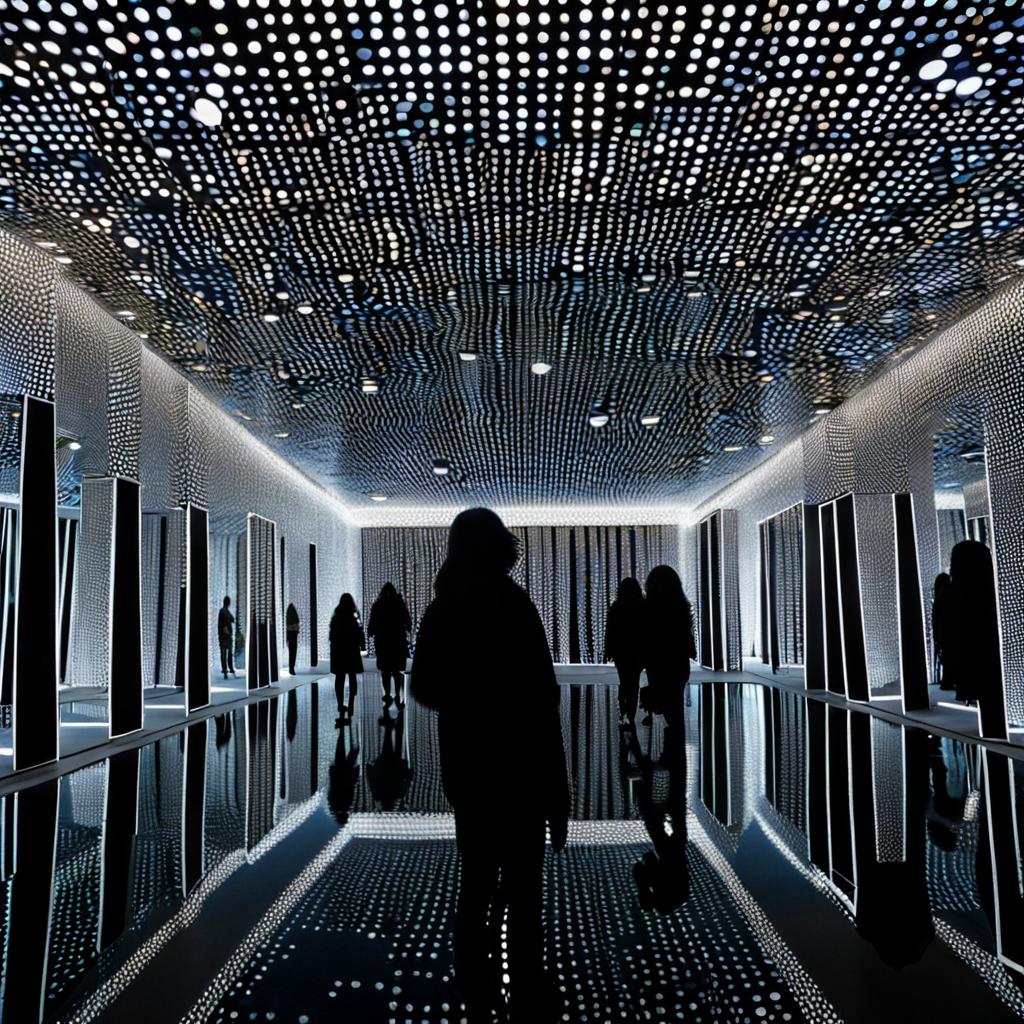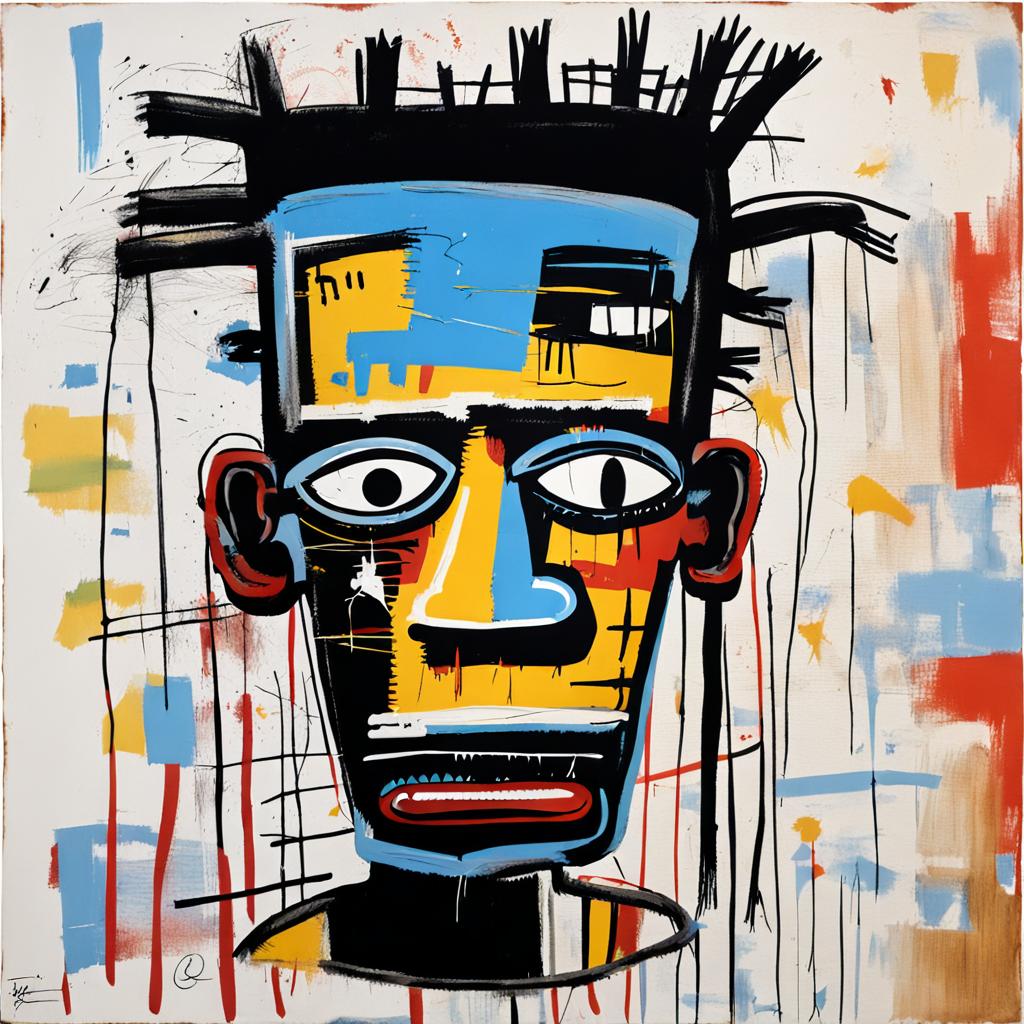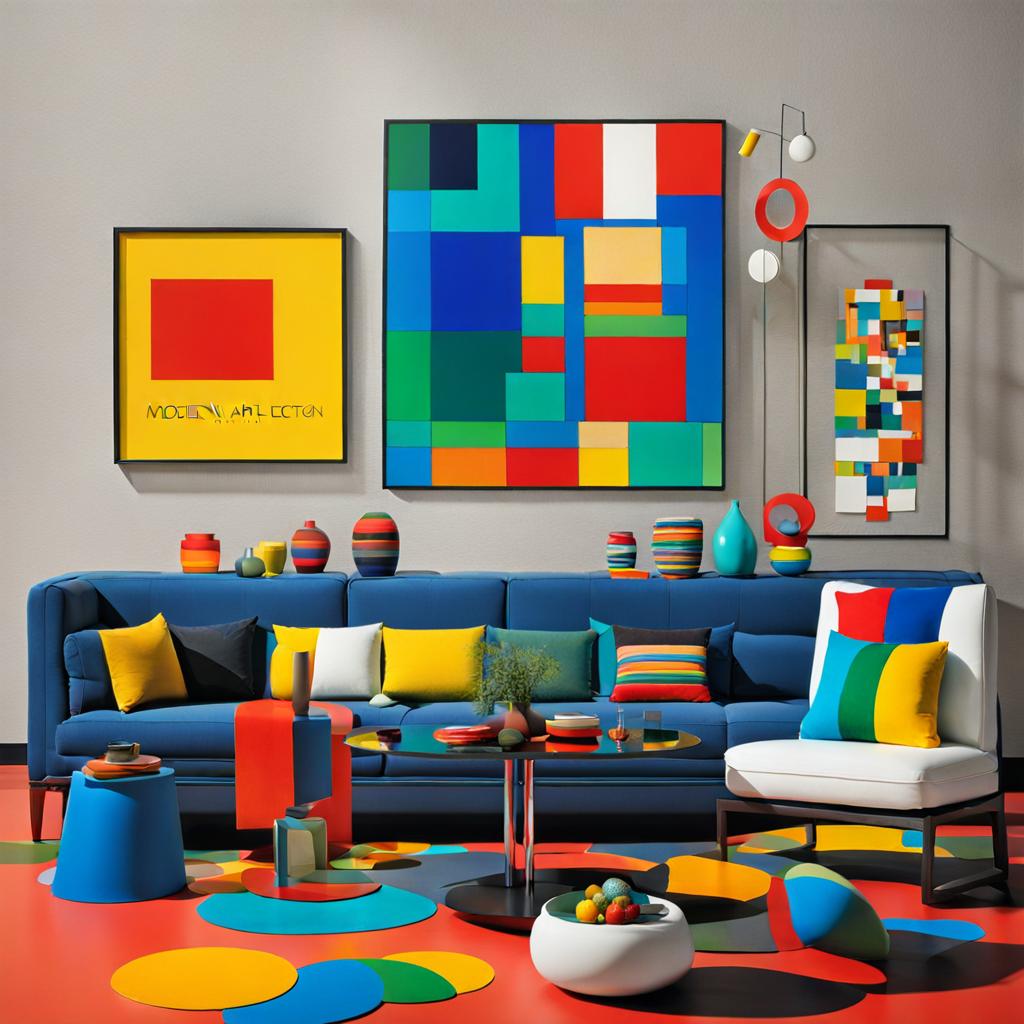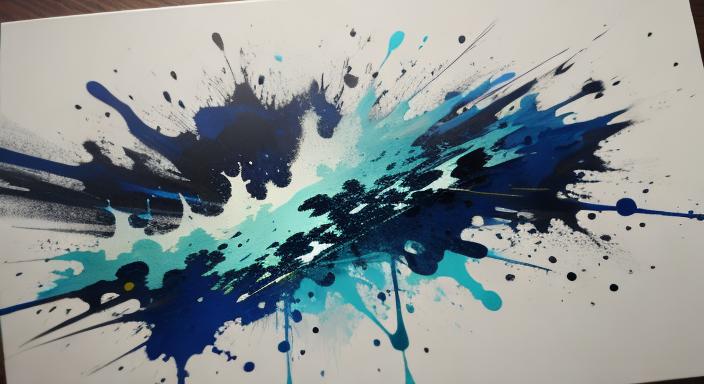Picture this: You’re sipping a glass of wine, surrounded by breathtaking artworks that whisper your deepest secrets and shout your boldest dreams. Welcome to the thrilling world of private art collecting – a journey that’s part treasure hunt, part self-discovery, and entirely addictive.
Gone are the days when art collecting was reserved for the elite few. Today, it’s a playground for anyone with a passion for beauty and a hunger for personal expression. Whether you’re a Wall Street mogul or a starving artist yourself, building your own collection is like creating a visual diary of your life’s adventures.
Imagine turning your living room into a time machine, where a single glance can transport you from the vibrant streets of 1920s Paris to the pulsing heart of New York’s contemporary art scene. Each piece you choose becomes a chapter in your story, a conversation starter, and let’s face it – a pretty impressive backdrop for your selfies.
But hold onto your berets, folks! We’re about to dive headfirst into the colorful, sometimes crazy, always captivating universe of art collecting. We’ll unravel the mysteries of the art market, learn how to spot the next Banksy before they’re Instagram famous, and figure out how to display your treasures without turning your home into a cluttered curiosity shop.
Whether you’re drawn to paintings that make you question reality, sculptures that defy gravity, or installations that leave your guests scratching their heads, this guide is your golden ticket to curating a collection that’s as unique as your fingerprint.
So, are you ready to transform your space into a personal gallery that will make museum curators green with envy? Strap in, art lovers – we’re about to paint the town red (and blue, and yellow, and every color in between) on this exhilarating journey into the heart of art collecting!
Understanding the Foundations of Art Collecting
The Philosophy Behind Private Collections
Building a private art collection is more than just acquiring beautiful objects; it’s about creating a personal narrative through visual storytelling. Your collection should reflect your tastes, passions, and life experiences. Consider what draws you to certain pieces – is it the artist’s technique, the subject matter, or the emotions it evokes? Understanding your motivations will help you curate a more meaningful collection.
Exploring Different Art Styles and Mediums
The world of art is vast and diverse, offering countless styles and mediums to explore. From oil paintings and watercolors to sculptures, photographs, and digital art, each medium has its unique characteristics and appeal. Take time to visit galleries, museums, and art fairs to expose yourself to various styles and find what resonates with you.
Setting Your Collection’s Focus

While it’s tempting to collect anything that catches your eye, having a focus can make your collection more cohesive and potentially more valuable. You might choose to collect works from a specific period, region, or theme. For example, you could focus on emerging contemporary artists, 20th-century abstract expressionism, or art that explores environmental themes.
Perhaps you want to take your lead from some existing collectors – if you have the pocket!
Private Art Collections

The Broad, Los Angeles: Eli and Edythe Broad’s collection is a prime example of contemporary art collecting. Their passion for post-war and contemporary art led to the creation of this museum, which houses works by Jean-Michel Basquiat, Jeff Koons, and Yayoi Kusama. The Broad’s “Infinity Mirrored Room” installation by Kusama has become an Instagram sensation, showing how private collections can engage with modern audiences.
The Phillips Collection, Washington D.C.: Duncan Phillips transformed his family home into America’s first museum of modern art. His collection, which includes works by Renoir, Rothko, and O’Keeffe, demonstrates how a personal vision can evolve into a public treasure.
The Menil Collection, Houston: John and Dominique de Menil’s eclectic collection spans from antiquities to contemporary art. Their dedication to Surrealism and abstract expressionism resulted in an impressive array of works by Magritte, Ernst, and Pollock. The Rothko Chapel, commissioned by the de Menils, showcases how private collectors can contribute to public spiritual spaces.
The Rubell Museum, Miami: Don and Mera Rubell started collecting contemporary art in the 1960s on a modest budget. Today, their collection includes works by emerging artists alongside established names like Keith Haring and Kehinde Wiley. The Rubells’ approach highlights how consistent, passionate collecting can build an impressive collection over time.
The Boros Collection, Berlin: Housed in a former Nazi bunker, Christian and Karen Boros’ collection of contemporary art offers a unique viewing experience. This example shows how collectors can repurpose unconventional spaces to showcase their art.
Daskalopoulos Collection, Greece: Dimitris Daskalopoulos’ collection of contemporary art, featuring works by Louise Bourgeois and Kiki Smith, demonstrates how private collectors can contribute to their country’s cultural landscape. In 2022, Daskalopoulos announced the donation of significant parts of his collection to four museums globally, exemplifying how private collections can benefit public institutions.
The Zeitz Collection, Cape Town: Jochen Zeitz’s collection of contemporary African art forms the core of the Zeitz Museum of Contemporary Art Africa. This example shows how private collections can spotlight underrepresented art scenes and contribute to cultural tourism.
Celebrity Collections
Let’s dive into the glitzy world of celebrity art collections! It’s fascinating to see how the rich and famous express their personalities through their art choices. You know, it’s not just about hanging a pretty picture on the wall – for many celebs, it’s a way to showcase their taste, invest their wealth, and sometimes even make a statement.

Take Leonardo DiCaprio, for instance. The guy’s not just about saving the planet and making great movies – he’s got a seriously impressive art collection. Word on the street is that he’s particularly fond of Jean-Michel Basquiat’s work. Can you imagine having a Basquiat casually hanging in your living room? Talk about a conversation starter!
Then there’s Jay-Z and Beyoncé. This power couple doesn’t do anything by halves, and their art collection is no exception. They’ve been known to drop millions on pieces by artists like Basquiat (seems to be a celeb favorite!), Andy Warhol, and Damien Hirst. I mean, when you’re music royalty, why not surround yourself with visual masterpieces too?
Let’s not forget about Elton John. The Rocket Man himself has an eye for photography that’s as sharp as his musical ear. His collection includes works by masters like Man Ray and Irving Penn. It just goes to show that art collecting isn’t limited to paintings – there’s a whole world of mediums out there!
But here’s the thing – you don’t have to be a multi-millionaire to start your own collection. Even celebs like Swizz Beatz and Alicia Keys have talked about how they started small, buying pieces they loved rather than focusing on big names. It’s all about finding what speaks to you, whether that’s a print from an up-and-coming local artist or a sculpture that catches your eye at a flea market.
In the end, what makes these celebrity collections interesting isn’t just the price tags or the famous names. It’s the way they reflect the collector’s personality and passions. Whether it’s Brad Pitt’s architectural pieces or David Bowie’s eclectic mix of British artists, each collection tells a story.
Navigating the Art Market
Research and Education
Before making any purchases, invest time in educating yourself about the art market. Read art publications, attend lectures, and engage with other collectors. Knowledge is power in the art world, and understanding market trends and artist reputations will help you make informed decisions.
Building Relationships with Galleries and Dealers
Establishing connections with reputable galleries and art dealers can be invaluable. They can provide access to sought-after pieces, offer expert advice, and keep you informed about upcoming exhibitions and sales. Don’t be afraid to ask questions and learn from their expertise.
The Role of Art Advisors
For those new to collecting or looking to make significant investments, working with an art advisor can be beneficial. These professionals can help you navigate the market, negotiate prices, and build a collection aligned with your goals and budget.
The Art of Selection: Choosing Pieces for Your Collection
Trusting Your Instincts
While research and expert opinions are important, don’t underestimate the power of your personal taste. If a piece speaks to you on an emotional level, it’s worth considering. After all, you’ll be living with these artworks, so choose pieces that bring you joy and inspiration.
Considering Quality and Condition
When evaluating potential acquisitions, pay close attention to the quality and condition of the artwork. Look for pieces that are well-preserved and, if necessary, professionally restored. The condition can significantly impact both the aesthetic appeal and the value of the piece.
Balancing Established and Emerging Artists
A well-rounded collection often includes works from both established and emerging artists. While big names can add prestige and potential value to your collection, supporting up-and-coming artists can be both rewarding and potentially lucrative if they gain recognition later in their careers.
Preserving and Protecting Your Collection
Proper Storage and Display
Proper care is essential to maintain the beauty and value of your artworks. Consider factors like lighting, temperature, and humidity when displaying pieces. For items not on display, invest in appropriate storage solutions to protect them from damage.
Insurance and Documentation
Insuring your collection is crucial to protect your investment. Keep detailed records of each piece, including provenance, purchase receipts, and condition reports. This documentation is not only important for insurance purposes but also adds to the value of your collection.
Conservation and Restoration
Regular maintenance and timely restoration can help preserve your artworks for generations to come. Work with professional conservators to address any issues and to develop a long-term preservation plan for your collection.
Creating a Cohesive Display
Curating Your Space
Displaying your collection is an art form in itself. Consider how different pieces interact with each other and with your living space. Experiment with different arrangements to create visual narratives and focal points within your home.
Rotating Your Collection
Don’t feel obligated to display all your pieces at once. Rotating artworks can keep your space feeling fresh and allow you to appreciate each piece anew. It also helps in preserving artworks that might be sensitive to prolonged exposure to light or environmental factors.
Incorporating Technology
Consider incorporating technology to enhance your collection’s display. Digital frames can showcase your collection of prints or photographs, while augmented reality apps can help you visualize how new pieces might look in your space before purchasing.
The Legal and Ethical Considerations
Understanding Provenance and Authenticity
Always verify the provenance and authenticity of artworks before purchasing. This not only protects you from fraud but also ensures that you’re not inadvertently participating in the trade of illegally obtained or counterfeit art.
Ethical Collecting Practices
Be mindful of the ethical implications of your collecting practices. Consider supporting artists from underrepresented communities and be aware of cultural sensitivities surrounding certain types of art or artifacts.
Sharing Your Collection
Private Viewings and Home Exhibitions
Consider hosting private viewings or small exhibitions in your home. Sharing your collection with friends, family, or fellow art enthusiasts can be a rewarding experience and can help you gain new perspectives on your pieces.
Collaborating with Museums and Galleries
As your collection grows, you might consider lending pieces to museums or galleries for special exhibitions. This not only shares your collection with a wider audience but can also enhance the prestige and value of your pieces.
The Wrap: The Ongoing Journey of Collecting
Building a private art collection is a lifelong journey of discovery, learning, and personal growth. It’s an opportunity to surround yourself with beauty, challenge your perceptions, and leave a lasting legacy. As you embark on or continue this exciting adventure, remember that the true value of your collection lies not just in its monetary worth, but in the joy, inspiration, and connection it brings to your life.
Whether you’re drawn to the Old Masters or cutting-edge contemporary works, the world of art collecting offers endless possibilities for exploration and self-expression. So go forth, explore galleries, engage with artists, and let your collection be a reflection of your unique vision and passion for the arts.



